MIX and match is the way to get the best out of a stay in Madrid. You could easily spend the entire visit elbowing your way through its world class art galleries, getting yourself lost in Europe’s largest royal palace or bar crawling/clubbing into the night across the vibrant Spanish capital. But after the introductory ease of Iberia Express's new service to Madrid take time for some less hectic pleasures…beginning with some fantastic eating and drinking...

1 Restore yourself with chocolate and churros
Forget the cholesterol count. Fresh churros, deep-fried sugared batter, a calorific cousin of the doughnut, are delicious dunked in thick, dark, hot chocolate and nowhere in Madrid does it better than the Chocolatería San Ginés in a passageway close to the church of that name near the Puerta del Sol. It has been open since 1894 and keeps a vintage interior of mirrors, marble tables and green velvet seats. A great place to recover in the early hours after the morning after a heavy night.
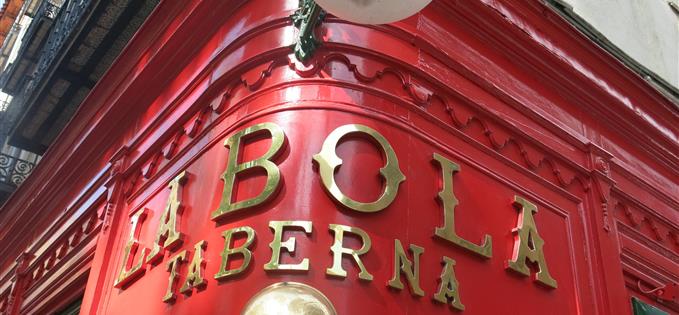

2 Take in a Taberna
The magnetic squares in the centre of Madrid’s Old Town are the bustling half-moon-shaped Puerto del Sol, beloved of locals, and the huge arcaded Plaza Mayor, which unashamedly aims at the tourist trade. In between, you’ll find the surviving tabernas (taverns) that maintain Madrid’s surprisingly rustic culinary traditions against a backdrop of marble, tiles, dark wood and inevitably a big clock. Family-run La Bola, with its bright red facade, was founded 200 years ago and is the bastion of Cocido Madrileno, a slow stew, where the broth is served as first course, then as main the meats and vegetables. In La Bola’s tiny kitchen the Cocidos were bubbling away in earthenware cazuelas on charcoal. Not far away is the revered Sobrino de Botin, established in 1727 and the oldest running restaurant in the world. Among many notables associated with it are thevpainter Goya, who worked there as a waiter, and regular Ernest Hemingway, who mentions it and its speciality, suckling pig, in his novel, The Sun Also Rises.
 La Berenjena and, below, La Castela
La Berenjena and, below, La Castela

3 Top tapas tips and raciones recommendations
My Madrid mole tells me great things about La Berenjena, tucked away on the Calle Marqués de Toca in the Antón Martín district, with top marks for croquetas, clams and burrata. More palate-challenging is newcomer TriCiclo with a trio of young chefs offering globally influenced small plates that include diverse ingredients such as cod glands, pig ears and kaffir lime leaves and kumquats in a white and wood dominated space. More traditional in looks is Casa Gonzalez on Calle León, once used as a film location by Woody Allen and offering fab wines to accompany acorn-fed ham and cured Manchego cheese. Finally, on the east side of the wonderful Retiro park, another stalwart bar, La Castela, with a great buzz, a quality free tapa with each drink and superb fresh seafood (try the clams in sherry sauce).
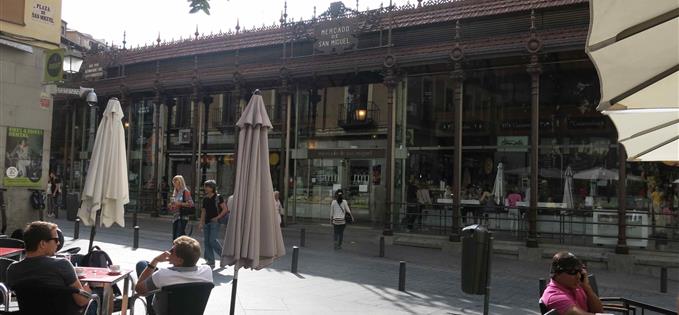
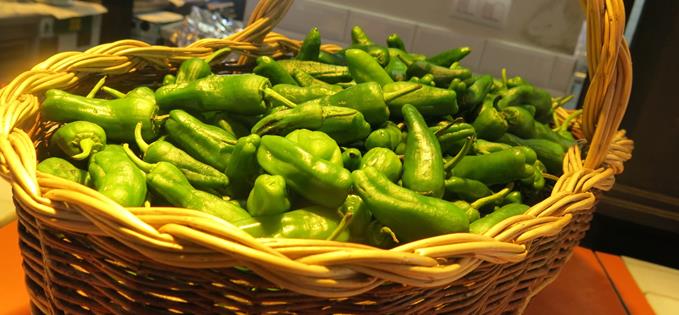
4 Or go to market
Barcelona’s Boqueria and Valencia’s Mercat Central define Iberian markets for me, teeming sources of the finest produce the peninsula can provide. Madrid’s approach is rather different, offering a clutch of boutique markets where the emphasis is on casual snacking and deli. The most central is the historic Mercado di San Miguel, self-styled ‘Centre for Culinary Excellence’. We especially liked the Galician octopus stall and the Daniel Sorlut oyster bar. Equally attractive at Calle de Augusto Figueroa, 24 in the gay-friendly enclave of Chueca is San Antonio market, which boasts a second floor restaurant using produce from the market stalls below and MURUA Oleoteca, a new showcase for the finest olive oils.

5 Stellar fine dining?
There are nine Michelin starred restaurants in Madrid, five of them with two stars and three with one. Ahead of the pack is the city’s first 3 star, DiverXO (above) in the Calle de Padre Damián. Opened only in 2007 it has has a meteoric rise under mohawked chef David Muñoz, whose Asian influences re evident throughoput his innovative cuisine. There is no a la carte option here, just two seasonally changing tasting menus, the lengthier being 18 courses. With matching wine expect to pay up top £250.
 Accidente
Accidente6 Which gallery to choose?
Prado or Reina Sofia – it’s a tough decision. Each hosts one essential Spanish canvas separated by centuries. At the Centro de Arte Reina Sofia, housed in Madrid’s former General Hospital it’s Picasso’s Guernica – on our visit we had this monumental 1937 Civil War protest picture to ourselves, amazingly – but don’t miss a disturbing painting from the previous year, Accidente, a self-portrait by Alfonso Ponce de León of himself in a car crash. Shortly afterwards this falangiste was tortured to death by left-wingers. The gallery of modern art is also home to Miro and Dalis. The immense Museo del Prado is as daunting as The Louvre. Short of time? Best just to cherry pick the Goyas and Velasquez – in particular his intriguing masterpiece, Las Meninas, the subject of a recent posthumous study by that great Hispanophile, Michael Jacobs, Everything is Happening: Journey Into A Painting.
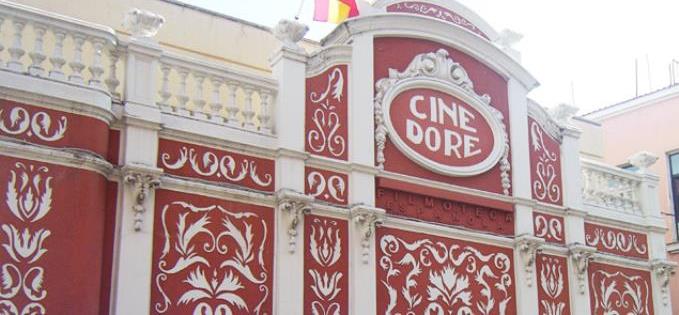
7 Catch a vintage flick
On Calle Santa Isabel, near the Anton Martin metro station. is a small 1912 theatre with a hundred years’ worth of world cinema history packed into it. The faithfully restored Cine Dore is a film lover’s paradise – both a working cinema and screening room for the adjoining national film library. From Tuesday to Sunday is screens as many as four films per night from 5.30pm, ranging from black and white gems to new world cinema in a variety of languages. Tickets are chap; get there early.
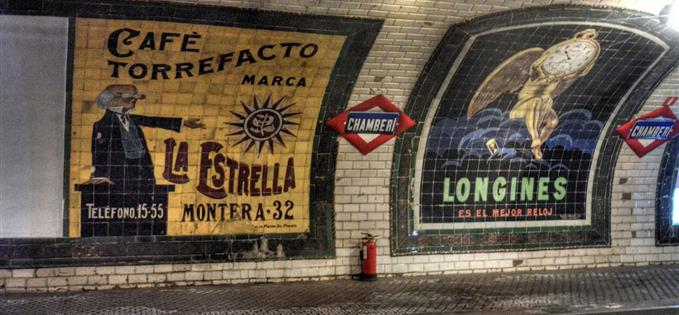
8 Go underground and back in time
An even quirkier retro experience is the ‘ghost station’, of Chamberí, abandoned in 1966 because they couldn’t lengthen the Metro platform to accommodate new, longer trains. For years, Madrileños wondered what happened to the station – they knew it existed, yet it appeared on no maps and no trains ever stopped there. Now reopened as a fascinating museum, Estacio de Chamberí, showcasing all the original 1919 features, advertisements and memorabilia. Surreally as you step back in time you become part of a ghostly sideshow as commuter trains whizz past.

9 See the Real Madrid
You missed seeing Ronaldo playing for Manchester United? Well it has been six years since he moved to Real Madrid. In the meantime this Mega Galactico has notched 229 goals for the club, scoring five in a recent match to make him their record goal scorer. Catch him at a match in the Santiago Bernabeu Stadium or just take a tour – he’s not the only legend to have graced the stadium. Tickets start at 13 euros and seeing the trophy cabinet alone is worth the three mile trip out.
 Royal Palace is an immense statement edifice
Royal Palace is an immense statement edifice10 Palacio Real
If Ronaldo is King and the Bernabeu his palace (with Gareth Bale as the Prince in waiting), don’t ignore the Palacio Real. It’s hard to really. Perched on the hill where the city started, yoked to the monumental cathedral, the Catedral de la Almuneda (started in 1879 and not completed until 1993, when it was inaugurated by Pope John Paul II). The Palace itself dates from 1734, replacing the conveniently burned down Royal Fortress and satisfying Philip V’s desire for a showpiece to rival Versailles, where he had spent part of his youth. These days the Spanish royal family only use it for official ceremonies and receptions. Rooms not to be missed include the 400 sq m dining room, the Sala de Porcelana (China Room) and the Salón del Trono (Throne Room) with its red velvet walls.
 Plaza Mayor; below, modern murals there and the Spanish Inquisition cast in metal
Plaza Mayor; below, modern murals there and the Spanish Inquisition cast in metal

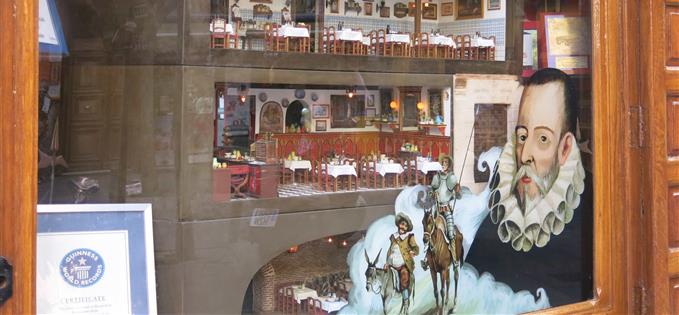 A tribute to Miguel Cervantes, author of Don Quixote, in the window of Botin
A tribute to Miguel Cervantes, author of Don Quixote, in the window of Botin The Botin taberna; below, snacking on octopus at San Miguel and checking the Cocido at La Bola
The Botin taberna; below, snacking on octopus at San Miguel and checking the Cocido at La Bola


Factfile
Getting there
Neil Sowerby travelled on the inaugural Iberia Express flight from Manchester Airport to Madrid (picture below of flamenco dancers at the Terminal 3 ribbon cutting).
Iberia Express is operating return flights from Manchester to Madrid on Tuesdays, Wednesdays and Saturdays until the end of October. Then throughout the winter season the low cost carrier will offer two services a week between both cities, on Tuesdays and Saturdays.
Manchester to Madrid costs from £35 one way. Until November 30 there’s a promotional price from £28 one way. The price for Business Express is from £126 each way, (all are the fare, tax included, when purchasing a round trip).
The flights are timed to offer easy connections from their Madrid hub to Valencia, Vigo, and other Spanish destinations, as well as to Lisbon, Buenos Aires, Mexico City, Montevideo, Santiago de Chile, São Paulo, and Tel Aviv.
For more information and flight reservations, please visit www.iberiaexpress.com and www.iberia.com. Iberia Express was named the world’s most on-time Low Cost Carrier in 2014 by FlightStats.’

Staying there
Neil Sowerby stayed at the four-star Hotel Petit Palace San Bernardo, conveniently situated in the C/San Bernardo off the shopping-centric and architecturally exuberant Gran Via.
Tourist info
If you are up for seeing multiple tourist attractions Madrid City Cards are a must. Prices start at 47 euros for 24 hours. For an additional price the Madrid Tourist Travel Pass gives you unlimited trips across Madrid's fine intercity public transport network.
For full tourism information visit The Madrid Convention Bureau. At their visitor centre in the Plaza Mayor vou can book guided tours, which are agood way to acclimatise to the city if you are new to it..










